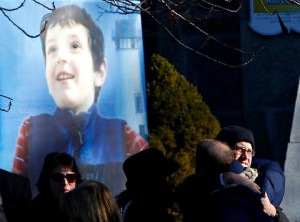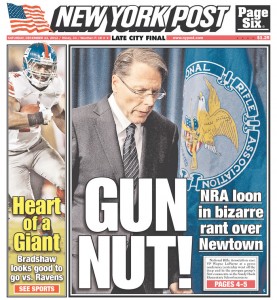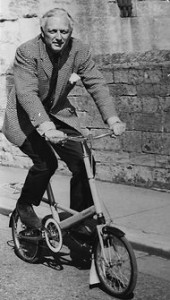Readers of this blog may have noted my recent post, Benjamin Wheeler, September 12, 2006-December 15, 2012–RIP, about one of the children murdered last Friday in Newtown, CT, and his father, David Cole Wheeler, with whom I was a co-worker at Avalon Publishing Group from 2001-2006. When I put up that post on Saturday there was no picture yet online of young Benjamin, but I see tonight that the Wheeler family has now released a photograph of their handsome young boy, and I am sharing it here.
A full obituary has now run in the Newtown Bee:
Benjamin Andrew Wheeler
Benjamin Andrew Wheeler was born in Manhattan, September 12, 2006, and moved to Newtown in April 2007 with his parents, Francine and David Wheeler, and his now 9-year-old brother, Nate.
Ben died December 14.
Inspired by dear friends who had made the move some years before, the family found a house in Sandy Hook and a cultural, spiritual, and creative home in the rare collection of priorities and spirit that is Newtown. Since then, Francine has become a fixture in Newtown as a music educator and performer, and more broadly, as a founding member of the children’s music group, The Dream Jam Band, while David works as an illustrator and designer. Both of them are members of Newtown’s own Flagpole Radio Cafe live radio show.
Ben was an irrepressibly bright and spirited boy whose love of fun and excitement at the wonders of life and the world could rarely be contained. His rush to experience life was headlong, creative, and immediate.
He was a devoted fan of his older brother, Nate, and the two of them together filled the house with the noise of four children. He loved the local soccer program, often running across the field long after it was actually necessary, but always smiling and laughing as he moved the ball, nearly always at full tilt. He was becoming a strong swimmer and loved his lessons.
Eager to learn, he could not wait to get to school to see his teacher and his growing group of new first grade friends. Ben was also a member of Tiger Scout Den 6, which met at the Sandy Hook Volunteer Firehouse.
Earlier in December, Ben performed at his piano recital, and sitting still long enough to play one piece was an accomplishment he reveled in. He loved The Beatles, lighthouses, and the number 7 train to Sunnyside, Queens.
In a conversation with Francine before school on Friday, he said, “I still want to be an architect, but I also want to be a paleontologist, because that’s what Nate is going to be and I want to do everything Nate does.”
He will be sadly missed by his loving parents; his brother Nate; his grandparents Carmen and Annette Lobis of Garnet Valley, Penn., Ellsworth and Kay Wheeler of Charleston, S.C., and Harry Berquist of Newport News, Va.; great-grandmother Sophia Turchi of Broomall, Penn.; aunts and uncles Michael and Sheila Lobis, Anthony and Colleen Lobis, and Steven and Ann Lobis, all of Penn., Jeffrey and Dawn Wheeler of Wash., and Andrew and Jamie Wheeler of Hawaii; great-aunts and uncles James and Nancy Cole of Va., Robert Lobis of Colo., and Michael Lobis, Marianne Stewart, and Marie Turchi, all of Penn.; and numerous cousins and friends. He was predeceased by grandmother Ann Cole Berquist.
It is suggested that memorial donations be made to the Benjamin Wheeler Fund, c/o Trinity Episcopal Church, 36 Main Street, Newtown CT 06470.
The family will receive visitors at the Trinity Episcopal Church, Newtown, Wednesday, December 19, from 4 to 8 pm. The funeral will be held at the church Thursday, December 20, at 11 am. Burial will be private.
The B.C. Bailey Funeral Home of Wallingford has been entrusted with the arrangements. To leave a message of remembrance, please visit www.BCBailey.com.
—
My deepest condolences to David, Ben’s mother Francine, and their older son, Nate. Please feel free to leave a comment in space below, if you worked at Avalon with us, or would just like to say something.







